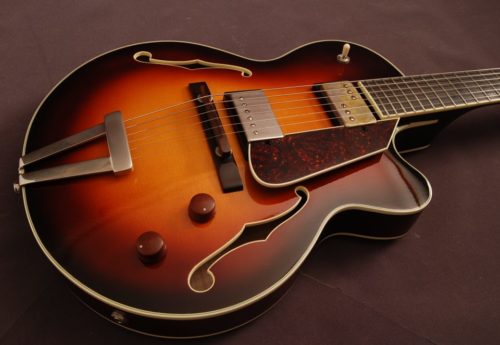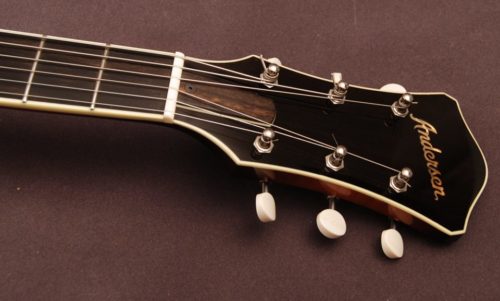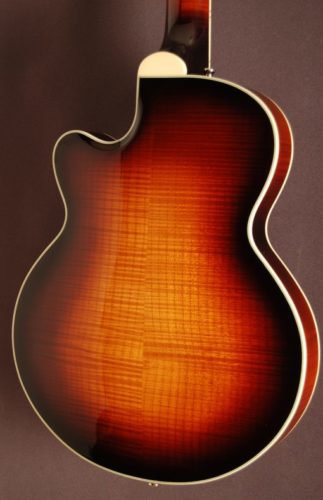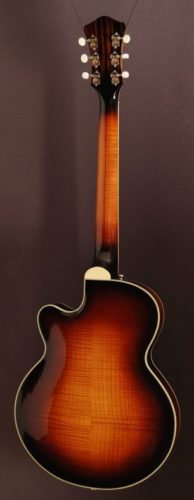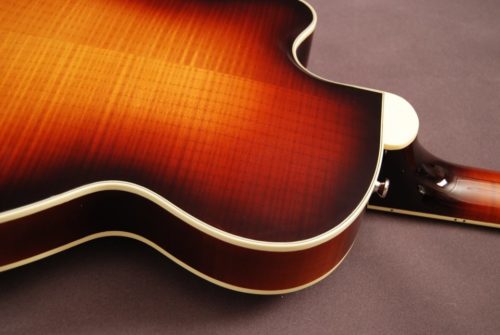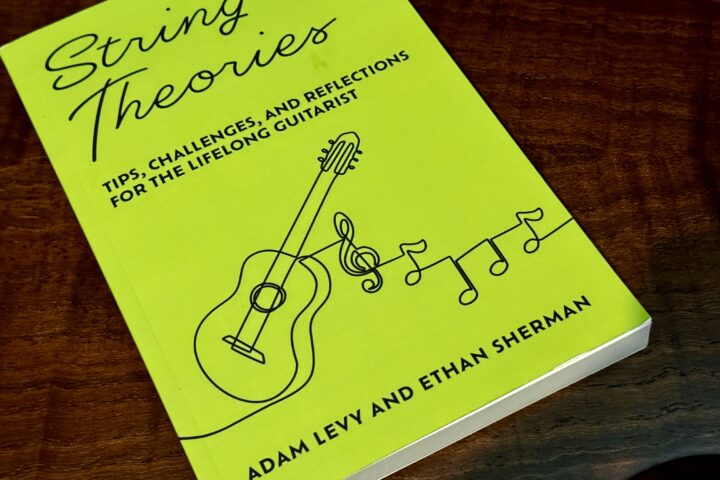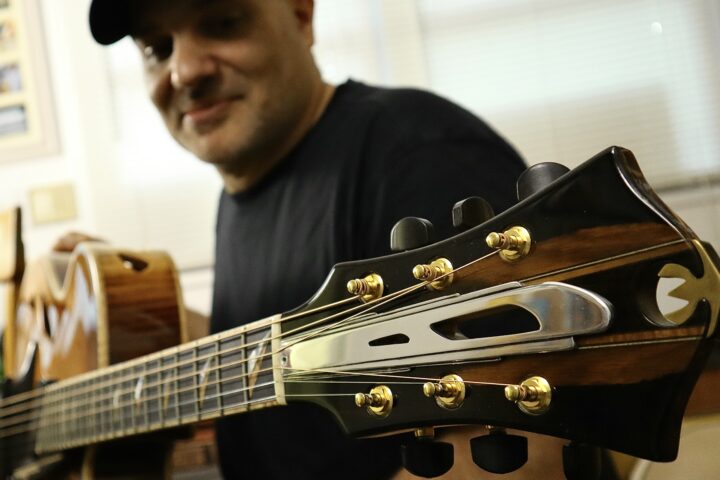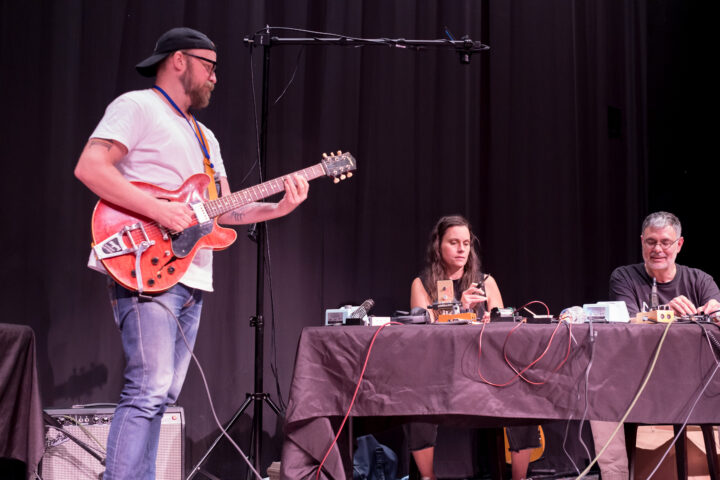There really are too many sweet guitars within a stone’s throw of the Fretboard Journal‘s Seattle offices, all manner of instruments new, vintage and used, boutique and mass-produced, custom, acoustic and electric to clog up your Wish List and drive you into a G.A.S.-fueled frenzy. Case in point, Steve Andersen (the subject of a story in Issue 36, whose shop is just up the hill) has a handful of older instruments for sale, and given that he’s no longer taking custom orders (he recently decided to restrict his offerings to two or three simple models built on spec), used is the only way you can get them. Steve will continue offering two variants based on his “Streamline” and “‘New’ Electric Archie” models, as well as the “Fremont” model (also based on the “Streamline”), available exclusively via Dusty Strings in Seattle.
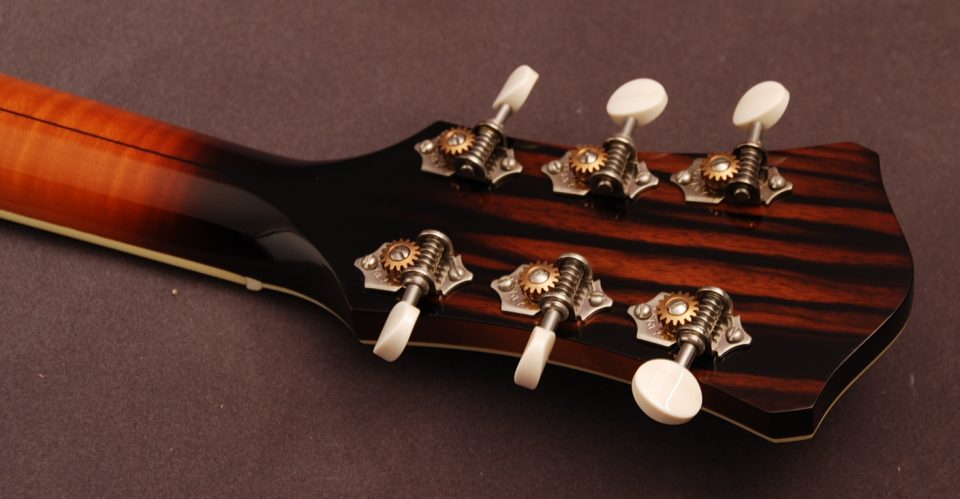
Today’s Catch is one of those older instruments, a 2009 “Electric Archie” with a couple minor variations on the model’s original specs, but still largely as it was originally co-designed by Steve and Bill Frisell. With the exception of a couple one-offs built for Steve Miller (yes, that Steve Miller) back in the day, the “Electric Archie” is as close as Steve got to building a strictly electric guitar. It’s based loosely on his 14″ “Little Archie” archtop (an oval-holed model also built with input from Bill, who wanted an archtop that would be easier to travel with), but with a shallower (2″ instead of 2.5″) body and a partially carved spruce top: there is a 4″ section that is left “full thickness” running down the center that, naturally, somewhat diminishes the acoustic response of the top, reins in potential feedback issues and provides a solid platform for the mounted pickups. As the model evolved into the so-called “‘New’ Electric Archie,” Steve developed a hybrid approach, eliminating that thicker center section, going back to the 2.5″ depth for the body and eschewing the bridge pickup.
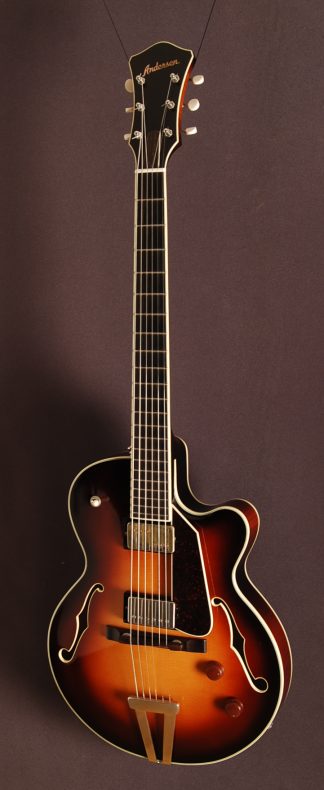
This particular example of the “Electric Archie” differs from the original specs in its pickups (a Lindy Fralin P-92 in the neck position and a Lollar Low-Wind Imperial Humbucker that replaced a second Fralin P-92 in the bridge, rather than a set of Seymour Duncan Antiquity humbuckers) and in it’s fully-finished neck (Bill’s specs left the maple neck naked from heel to headstock). Beyond those tweaks it has all of Steve’s impeccably tasteful touches: the handmade nickel-plated brass tailpiece, the celluloid tortoise-faced pickguard (with its clever single mounting point sandwiched between the neck and fingerboard), the Macassar ebony accent on the back of the headstock, handmade volume and tone knobs fashioned from Bakelite, that subtle scoop integrated with the cutaway and a gorgeous sunburst finish. The top is Engelmann spruce; the back, sides and neck are maple; the fingerboard and peghead face are ebony, as is the bridge. It’s bound — body, neck and f-holes — in ivoroid, and it sports Waverly tuners with ivoroid buttons. It’s 14″ at the lower bout and 2″ deep, with a 24.9″ scale length and a 1-11/16″ nut, making it a very comfortable guitar. The neck profile is slim-ish, the playability easy and fast. The bridge humbucker has both beef and bite, while the underwound P-92 has a sweet chime and tremendous clarity, making this seem like a very versatile instrument. You can find it at Thunder Road Guitars in Seattle, recently reduced to $5,299, including a custom Cronkhite gig bag, and you could do a lot worse.
